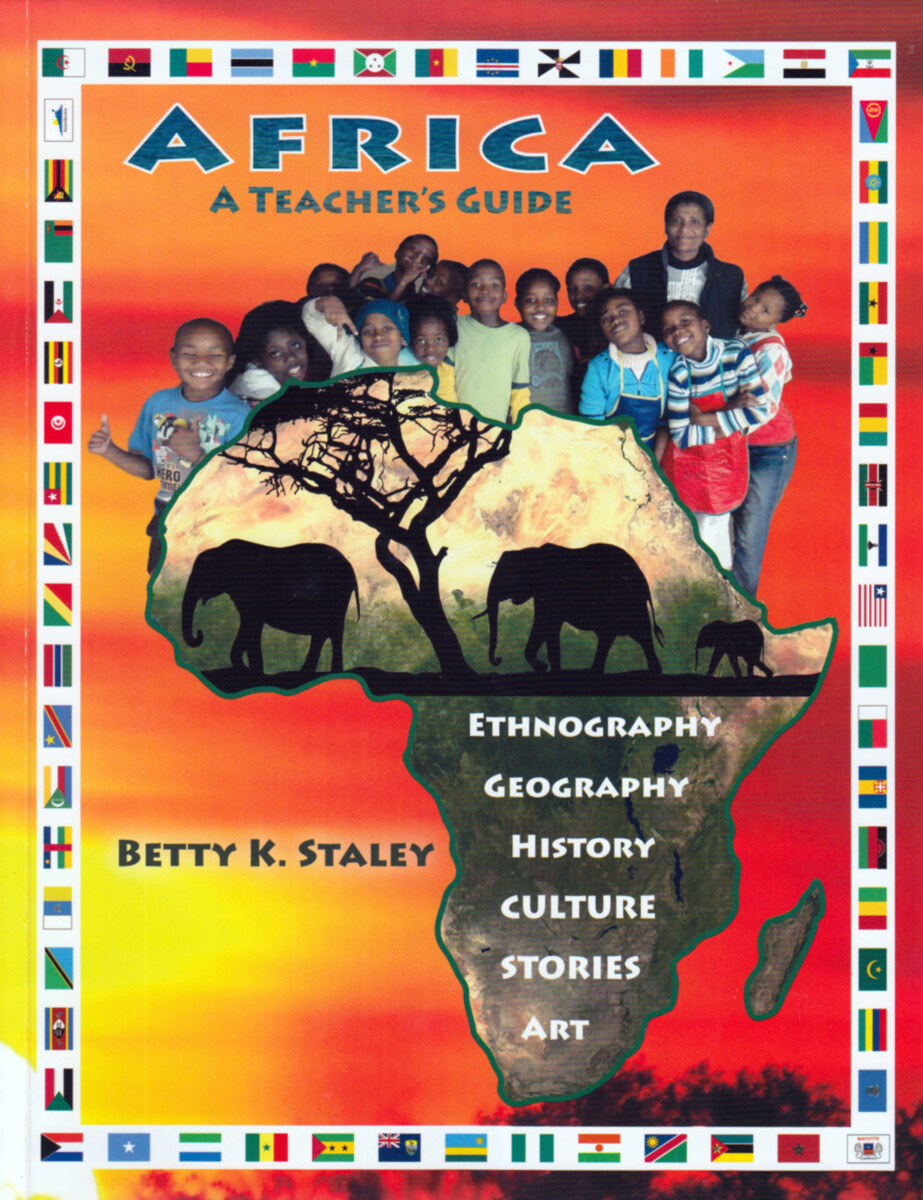Africa
A Teacher's Guide: Ethnography, Geography, History, Culture, Stories, Art
- Publisher
Bell Pond Books - Published
5th January 2021 - ISBN 9781952166075
- Language English
- Pages 494 pp.
- Size 8.5" x 11"
This comprehensive guidebook to Africa is a carefully organized resource for teaching children and adolescents about African culture. It is divided into geographical regions so that each can be highlighted and contrasted. The songs, fairytales, mythologies, biographies, art, and recipes are highlighted with practical activities for each grade including kindergarten.
This is an invaluable book for teachers in elementary and high school, as well as for homeschool parents. Based on this extensive, well-researched book, Waldorf teachers have created a full unit on Africa. Teachers and parents will welcome this revised edition. Hear the Voice of the Griot!
Illustrated extensively in black and white.
“Africa: A Teacher’s Guide is a carefully, well-organized resource for preparing a main lesson on African geography and culture. The book is divided into geographical regions, so each can be highlighted and contrasted. I also found the songs, mythologies, and recipes most helpful in bringing the lessons to life. I even made some of the simple musical instruments that are out-lined. The book is filled with rich and colorful descriptions of the land, along with the history, folklore, and traditions of this amazing continent. A must-have resource for anyone wishing to gain a living picture of Africa.”—Denis Fitts, Teacher, Sacramento Waldorf School, California
“Thank you for this very practical book. It helped me in creating a lively, colorful, and successful African geography block for my seventh-grade class. It is particularly useful for biographies that are difficult to find elsewhere. Our class went on a field trip to experience Ethiopian cuisine at Café Lalibela, named after King Lalibela, featured in your biographies. The owner of the restaurant was surprised that the students knew the story of this Ethiopian king better than he himself had. Students also did research reports on different African ethnic groups and gathered information of customs, stories, and the physical geography of the biome in Africa. The hardest part of this block was how to end such a joyful and lovely experience.”—Linda Maynard, Desert Marigold School, Phoenix, Arizona
“My students and I were led into the land of the continent with stories of peoples from many of its cultures and countries, along with those of the earliest-known human beings, which fascinated both my students and me. We learned about the importance of the interconnections of life in both human and natural history through wonderful tales such as those of the Baobab and Acacia trees, the journeys of Ibn Battuta (the great Muslim traveler and missionary), the qualities of the animals, and the characteristics of many of the cultures of this vast continent. Our class also delighted in the music, games, art, fables, and myths. Great lessons abound, and as a teacher I especially appreciated the suggestions for teachers at the end of the chapters and sections. This book is an invaluable tool for anyone wishing to explore the wonders of the African continent. Thank you, Betty Staley, for this important contribution to education.”—C. Andrew Luck, Grades teacher, Corvallis Waldorf School, Oregon
“I had a farm in Africa, at the foot of the Ngong Hills. The Equator runs across these highlands, a hundred miles to the North, and the farm lay at an altitude of over six thousand feet. In the day-time you felt that you had got high up, near to the sun, but the early mornings and evenings were limpid and restful, and the nights were cold.
“The geographical position, and the height of the land combined to create a landscape that had not its like in all the world. There was no fat on it and no luxuriance anywhere; it was Africa distilled up through six thousand feet, like the strong and refined essence of a continent.” —Isak Dinesen
C O N T E N T S:
Foreword 1992
Preface 1992
Preface 2017
Acknowledgments
Introduction
How to Use this Book
Section One: African Geography
Section Two: African History
Section Three: Regions of Africa
Section Four: The Inner Africa
Section Five: Fairy Tales, Fables, Myths, and Poems
Section Six: Saints and Other Holy Figures
Section Seven: Other Aspects of African Culture
Conclusion
Epilogue
Notes
Bibliography
Index
Betty K. Staley
Betty K. Staley was born in 1938 in the Bronx, New York, attended City University of New York, graduating Phi Beta Kappa with a BA in psychology and a minor in history. She received her Waldorf teacher training at the Michael Hall Teacher Training Course, Sussex, England. She earned her MA in Education at St. Mary's College, Moraga, California. Ms. Staley began her Waldorf teaching at the Sacramento Waldorf School as a kindergarten substitute and handwork teacher, and then became a class teacher from 5th through 8th grade before returning to take a 7th grade, which became the first high school class, graduating in 1978. She guided the high school and taught in it full-time for nineteen years. Ms. Staley was a co-founder of Rudolf Steiner College, Fair Oaks, California. She has been a consultant and guide to Waldorf teachers, both in independent Waldorf schools and in Waldorf methods public schools, and for teachers of at-risk students. A worldwide lecturer on child and adolescent development, multiculturalism, and Waldorf education, Ms. Staley is the author of five books: Tapestries: Weaving Life's Journey (1997); Soul Weaving: How to Shape Your Destiny and Inspire Your Dreams (2000); Between Form and Freedom: A Practical Guide to the Teenage Years (2009); and Africa: A Teacher's Guide (2017, 2021).


